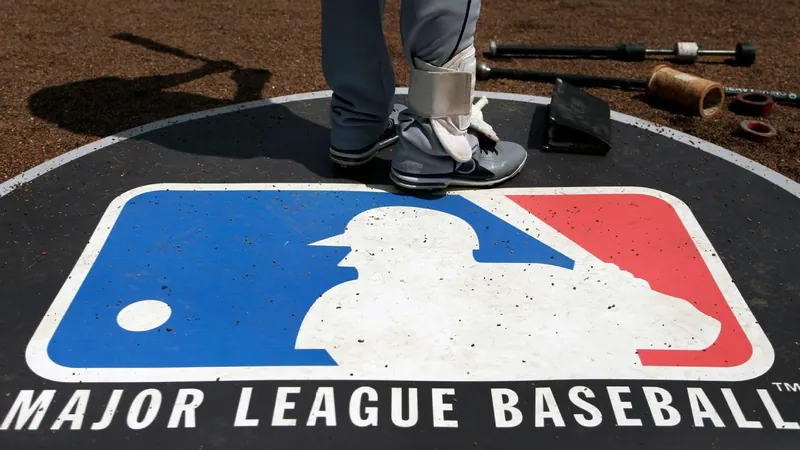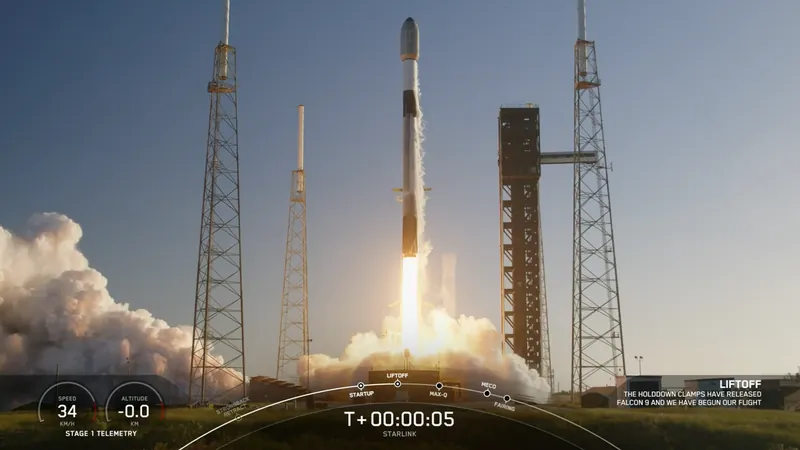
MLB's Bold Strategy: A New Era for Media Rights Across All 30 Teams!
2024-11-21
Author: Jessica Wong
Introduction
Major League Baseball (MLB) Commissioner Rob Manfred expressed a sense of relief following Diamond Sports Group's recent bankruptcy conclusion, which he sees as a turning point for the league's media rights strategy. "This gives us short-term certainty as we focus on our long-term media rights plan," Manfred stated at the MLB owners meetings.
Bankruptcy Overview
Last Thursday, a bankruptcy judge approved Diamond's reorganization plan, enabling the largest operator of regional sports networks to emerge from bankruptcy after a 20-month battle. As Diamond resumes operations, it will continue with broadcasting agreements involving six MLB teams: the Atlanta Braves, Detroit Tigers, Los Angeles Angels, Miami Marlins, St. Louis Cardinals, and Tampa Bay Rays.
Future Negotiations
Notably, these contracts are set to expire by 2028, the same year that MLB's significant national contracts with ESPN, Fox, and Turner come up for renewal. A key element of MLB's plan is to negotiate broadcasting rights for approximately half of the teams by 2028. The league envisions a future where it can consolidate linear and digital broadcasting rights for all 30 teams. This move is aimed at maximizing revenue and eliminating local blackouts, thereby expanding the reach of MLB games.
Challenges Ahead
However, this ambitious goal hinges on convincing teams with established regional sports networks—such as the Boston Red Sox, Los Angeles Dodgers, and New York Yankees—to cede some control to the league. Manfred emphasized the necessity of aligning the clubs' economic interests with these changes.
Shift to National Broadcasting
He noted, "More games on national outlets is a key strategy for maximizing revenue. Once we reach a consensus that national broadcasts are essential, we can begin to shift our approach."
Current Agreements
Looking ahead, MLB has already secured broadcasting rights for several teams, including the Arizona Diamondbacks, Cincinnati Reds, Cleveland Guardians, Colorado Rockies, Milwaukee Brewers, Minnesota Twins, and San Diego Padres for the year 2025. The Texas Rangers and Kansas City Royals remain uncommitted but are expected to join.
Future Integration
The integration of Diamond’s teams could potentially lead to 14 to 16 clubs working under a national broadcast umbrella, amplifying the MLB's visibility and revenue streams in the upcoming years.
Market Dynamics
However, the largest market franchises may prove resistant, as they stand to lose from an even distribution of local media revenues. New York Yankees owner Hal Steinbrenner acknowledged the complexities involved, stating, “We haven’t engaged in those discussions yet. It’s a conversation that will be necessary, but we’re not prepared to address it at this time.”
Separate Scenarios
The New York Mets, whose owner Steve Cohen chose not to comment on the situation, face a different scenario, as they do not have ownership stakes in their broadcast network, SNY, which holds rights until 2030.
Union Approval Needed
For any restructuring to become a reality, MLB will require the players' union's approval due to its implications for revenue sharing. Despite the challenges, Manfred remains optimistic.
Conclusion
"We will need to navigate through existing agreements, but if we can create substantial revenue growth, it will solve many problems," he noted. With these developments, MLB is undeniably on the path to reshape its media landscape—creating new opportunities, enhancing viewership, and unlocking potential profits for the league and its teams. Stay tuned, as this evolving story could redefine the way baseball fans experience their favorite sport!


 Brasil (PT)
Brasil (PT)
 Canada (EN)
Canada (EN)
 Chile (ES)
Chile (ES)
 España (ES)
España (ES)
 France (FR)
France (FR)
 Hong Kong (EN)
Hong Kong (EN)
 Italia (IT)
Italia (IT)
 日本 (JA)
日本 (JA)
 Magyarország (HU)
Magyarország (HU)
 Norge (NO)
Norge (NO)
 Polska (PL)
Polska (PL)
 Schweiz (DE)
Schweiz (DE)
 Singapore (EN)
Singapore (EN)
 Sverige (SV)
Sverige (SV)
 Suomi (FI)
Suomi (FI)
 Türkiye (TR)
Türkiye (TR)